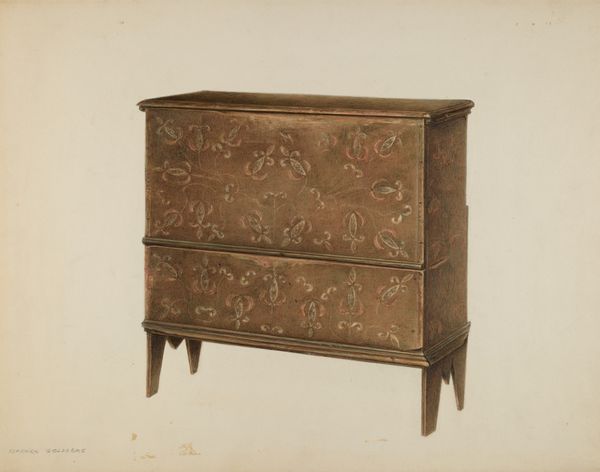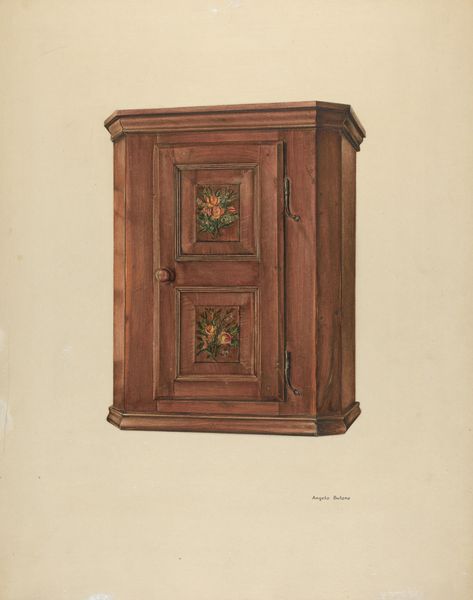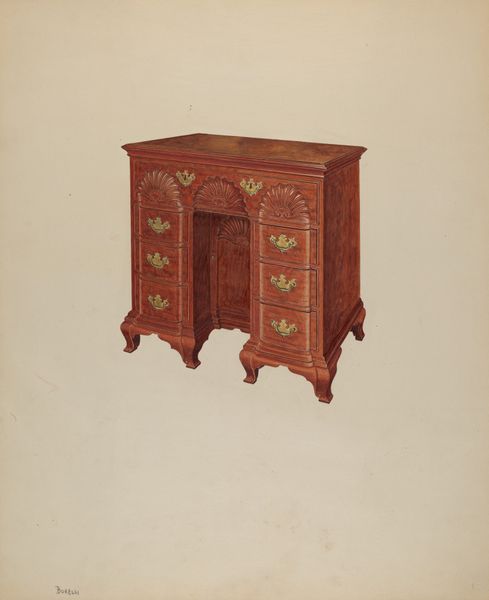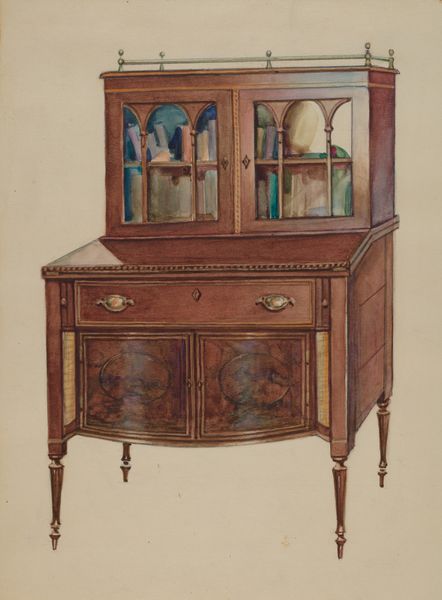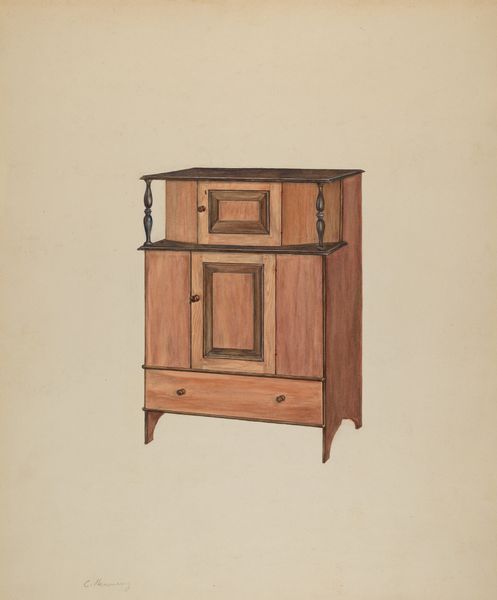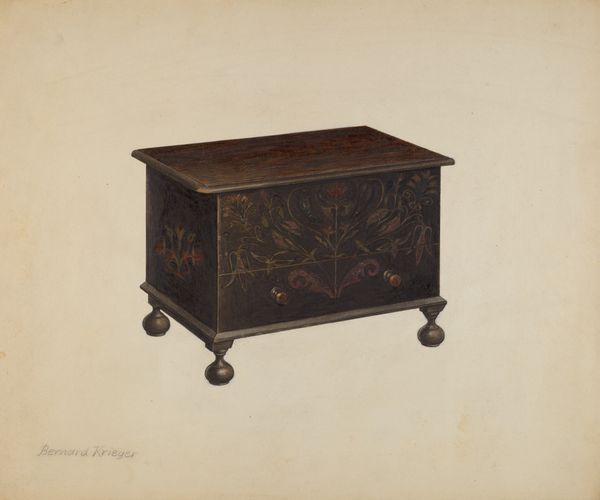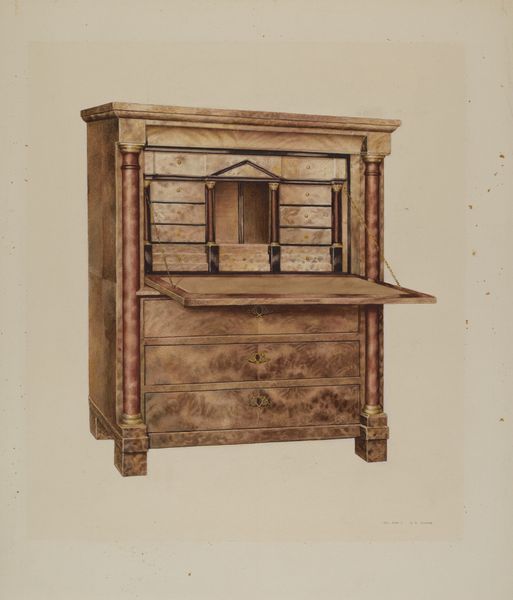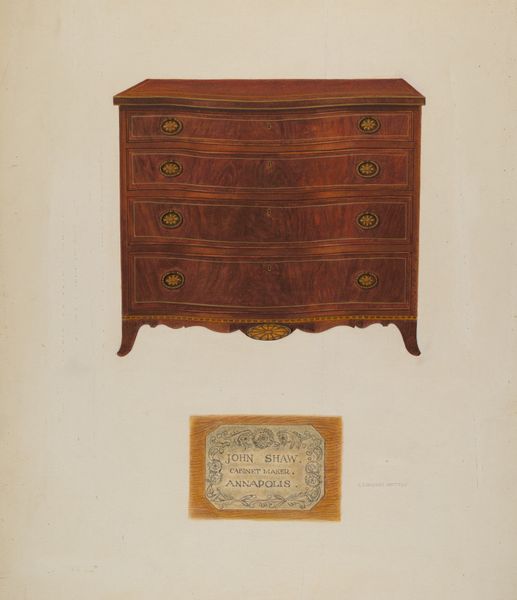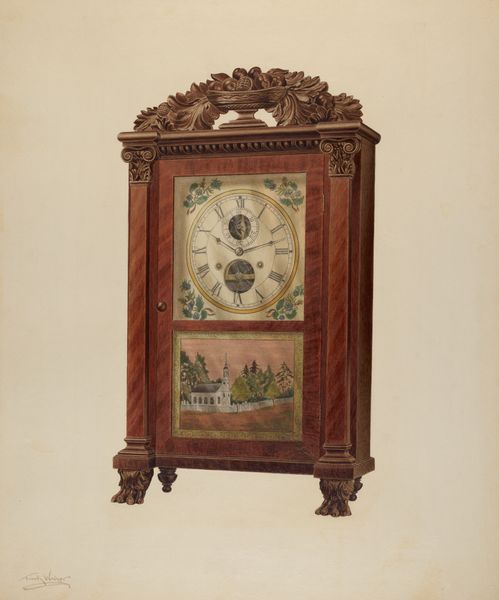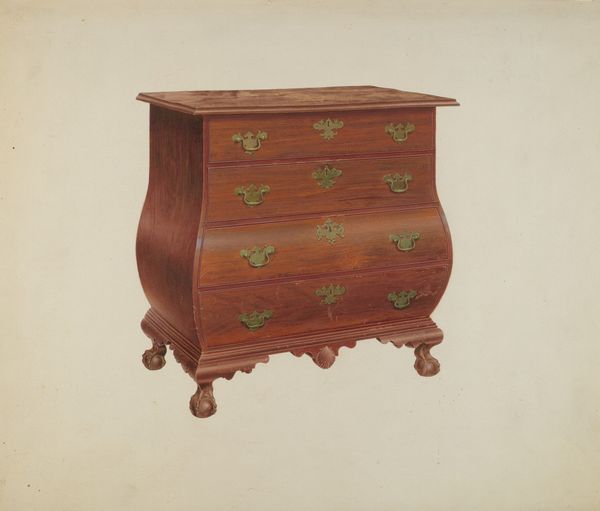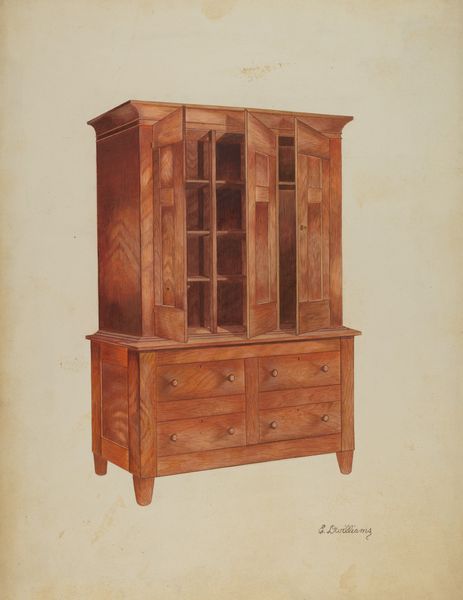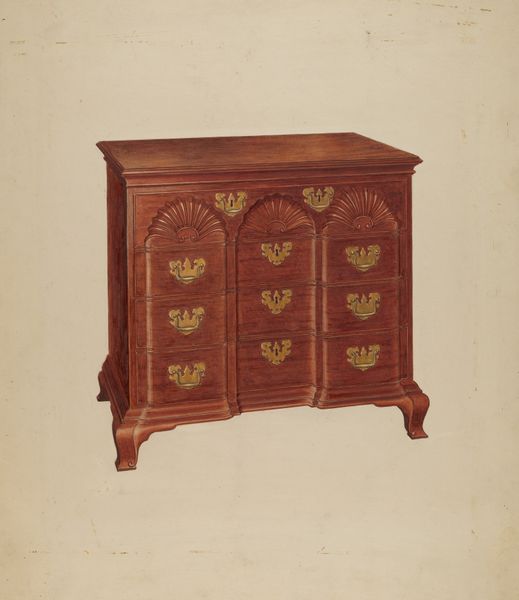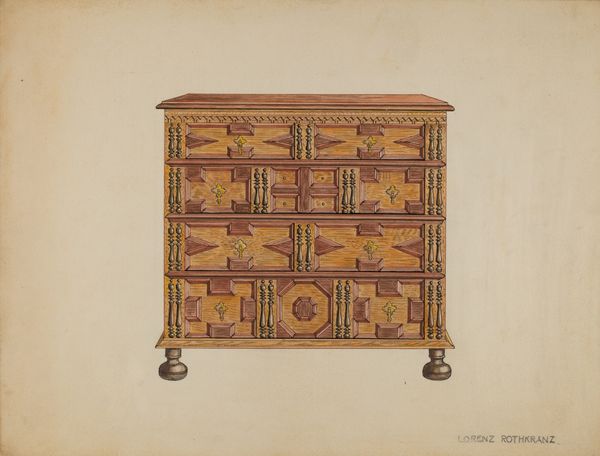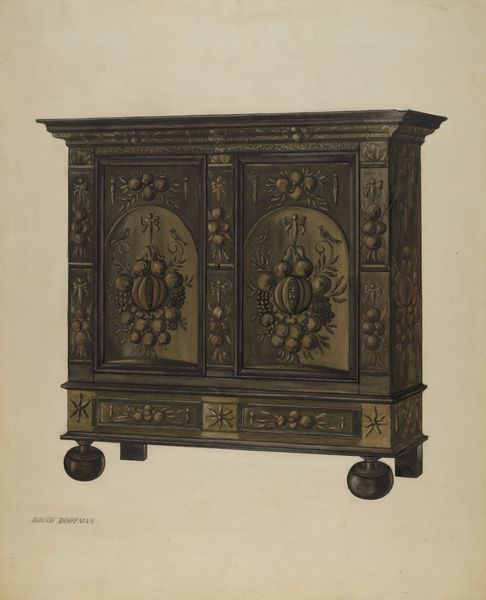
drawing, coloured-pencil
#
drawing
#
coloured-pencil
#
coloured pencil
#
modernism
#
watercolor
Dimensions: overall: 50.8 x 37.8 cm (20 x 14 7/8 in.)
Copyright: National Gallery of Art: CC0 1.0
Curator: This lovely piece is a drawing entitled "Zoar Cupboard," created by Angelo Bulone around 1939. The artist employed coloured pencils to bring this modernist image to life. What are your first impressions? Editor: It’s fascinating—the coloured pencils create a really unique texture. Almost a textile effect overlaying what seems like quite standard cabinet-making of the time. A beautiful clash. Curator: Indeed. I think we need to delve a little into the historical context. Bulone was likely depicting furniture made by the Zoar Community, a German Separatist group that established a communal village in Ohio in the early 19th century. Their furniture, known for its simplicity and functionality, became highly collectible. Editor: Ah, so this drawing serves as a record, perhaps even an advertisement or blueprint? I wonder about the social status imbued by possessing or commissioning such a depiction. Was this a way for individuals to align themselves with Zoar’s values, or simply to possess an image of coveted goods? What are the dimensions of the real artifact? Curator: Those are crucial questions! Bulone’s choice of coloured pencils is also something we need to think about. Was it simply a cost-effective and portable medium, a democratizing element, or was it carefully considered? This particular medium offers both control and vulnerability. We might think about it less as illustration, and more of as an extension of the handicraft. Editor: It does raise interesting issues of value. The artistic process versus the perceived utilitarianism of the furniture itself, how labor is priced. We often perceive drawings as secondary to other artistic practices, maybe here that’s the entire point. Curator: Exactly. By depicting something practical, like a cupboard, using techniques typically reserved for art, he blurred the lines, pushing viewers to question traditional art hierarchies and acknowledge artistry present in even the most mundane objects. The display is everything. Editor: A compelling perspective, viewing Bulone’s drawing as a form of social commentary wrapped in an aesthetically pleasing package. Curator: Agreed. "Zoar Cupboard" is more than just a furniture rendering; it’s a lens through which we can explore social values, the perception of labour and value in both art and craft, and the role of art in shaping and reflecting historical movements. Editor: Indeed. It leaves me wondering how communities remember, idealize, and repackage social ideas across historical ruptures. The choice of representing something quotidian to suggest wholeness makes one consider lost and fragmented archives of culture.
Comments
No comments
Be the first to comment and join the conversation on the ultimate creative platform.
